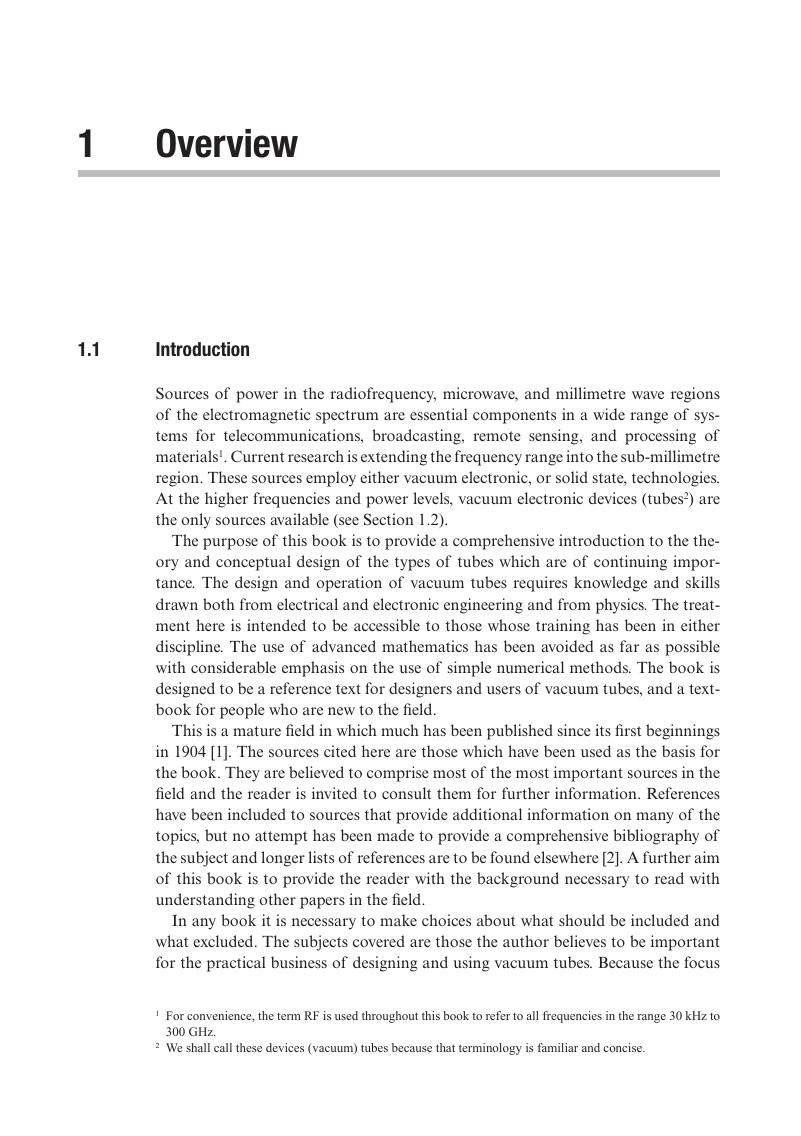Book contents
- Microwave and RF Vacuum Electronic Power Sources
- Reviews
- The Cambridge RF and Microwave Engineering Series
- Microwave and RF Vacuum Electronic Power Sources
- Copyright page
- Dedication
- Contents
- Preface
- Principal Roman Symbols
- Principal Greek Symbols
- Abbreviations
- 1 Overview
- 2 Waveguides
- 3 Resonators
- 4 Slow-Wave Structures
- 5 Thermionic Diodes
- 6 Triodes and Tetrodes
- 7 Linear Electron Beams
- 8 Electron Flow in Crossed Fields
- 9 Electron Guns
- 10 Electron Collectors and Cooling
- 11 Beam-Wave Interaction
- 12 Gridded Tubes
- 13 Klystrons
- 14 Travelling-Wave Tubes
- 15 Magnetrons
- 16 Crossed-Field Amplifiers
- 17 Fast-Wave Devices
- 18 Emission and Breakdown Phenomena
- 19 Magnets
- 20 System Integration
- Appendix: Mathcad Worksheets
- Index
- References
1 - Overview
Published online by Cambridge University Press: 27 April 2018
- Microwave and RF Vacuum Electronic Power Sources
- Reviews
- The Cambridge RF and Microwave Engineering Series
- Microwave and RF Vacuum Electronic Power Sources
- Copyright page
- Dedication
- Contents
- Preface
- Principal Roman Symbols
- Principal Greek Symbols
- Abbreviations
- 1 Overview
- 2 Waveguides
- 3 Resonators
- 4 Slow-Wave Structures
- 5 Thermionic Diodes
- 6 Triodes and Tetrodes
- 7 Linear Electron Beams
- 8 Electron Flow in Crossed Fields
- 9 Electron Guns
- 10 Electron Collectors and Cooling
- 11 Beam-Wave Interaction
- 12 Gridded Tubes
- 13 Klystrons
- 14 Travelling-Wave Tubes
- 15 Magnetrons
- 16 Crossed-Field Amplifiers
- 17 Fast-Wave Devices
- 18 Emission and Breakdown Phenomena
- 19 Magnets
- 20 System Integration
- Appendix: Mathcad Worksheets
- Index
- References
Summary

- Type
- Chapter
- Information
- Microwave and RF Vacuum Electronic Power Sources , pp. 1 - 40Publisher: Cambridge University PressPrint publication year: 2018



